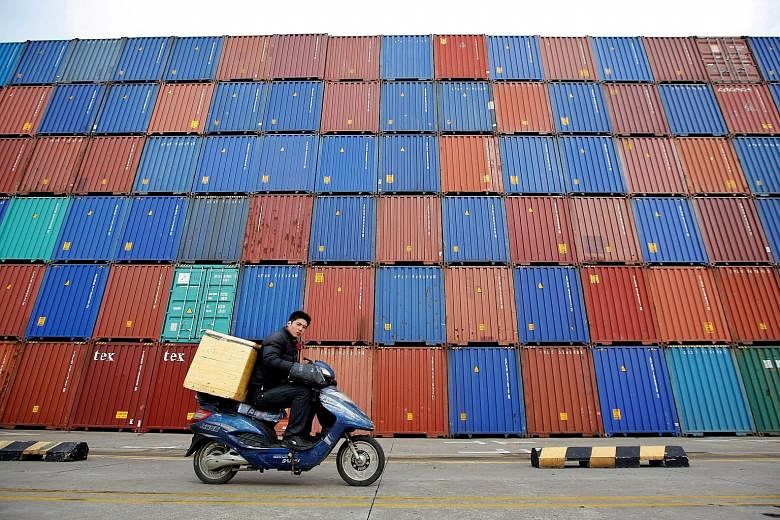HONG KONG • A hawkish turn from central bankers has rattled global markets. But in Asia, the doves still fly.
The region's six biggest monetary authorities, which oversee economies accounting for almost a third of global output, have not signalled a desire to fall in line with their Western counterparts to raise borrowing costs just yet.
Few expect the Bank of Japan to significantly change its massive bond-buying programme anytime soon. China's authorities remain in supportive mode, even as they curb a massive lending binge.
India is tipped to ease again, as growth sags and inflation slows to record lows, while South Korea, Indonesia and Australia are firmly on hold.
Hours after Canada tightened policy for the first time in seven years, the Bank of Korea held rates steady and made it clear it is in no rush to raise borrowing costs.
"We've not seen a single central bank in Asia signal outright tightening," Mr Frederic Neumann, co-head of Asian economic research at HSBC Holdings in Hong Kong, said on Bloomberg Radio.
The dovish outlook could change quickly, of course. The global economy's strongest synchronised upswing since 2010 has seen Asian exports growing at the fastest pace in six years. The International Monetary Fund projects growth of 5.5 per cent, the world's strongest, for the Asia-Pacific this year.
"A synchronised global recovery is improving Asia's growth prospects and will prompt the region's central banks to begin normalising policy," said Dr Chua Hak Bin, senior economist with Maybank Kim Eng Research. "Policy divergence will slowly morph into policy synchronisation."
Candidates to tighten could include the Philippines and Singapore, with potential for Indonesia to follow. Still, a return to the days of moving in tandem with the Federal Reserve appear to be far away.
While United States Fed chair Janet Yellen has pulled the trigger four times since 2015, her Asian counterparts have not responded. Contained wage costs and subdued commodity prices are keeping a lid on inflation in much of Asia. Signs of a breakout in China's factory prices - once tipped to revive global inflation - are fading.
"They won't be front runners right after the Fed," Ms Alicia Garcia Herrero, chief Asia-Pacific economist at Natixis in Hong Kong, told Bloomberg Television.
Stronger currencies and soaring debt are other reasons why Asia's central banks are cautious about lifting interest rates.
China's total debt pile has climbed to 260 per cent of the economy's size from 160 per cent in 2008. Japan's borrowing is more than twice the size of gross domestic product and household leverage in South Korea and Australia is at records. Asia's economies are also well-placed to handle capital outflows in case major central banks raise rates, noted Singapore-based economist Shilan Shah at Capital Economics.
BLOOMBERG

